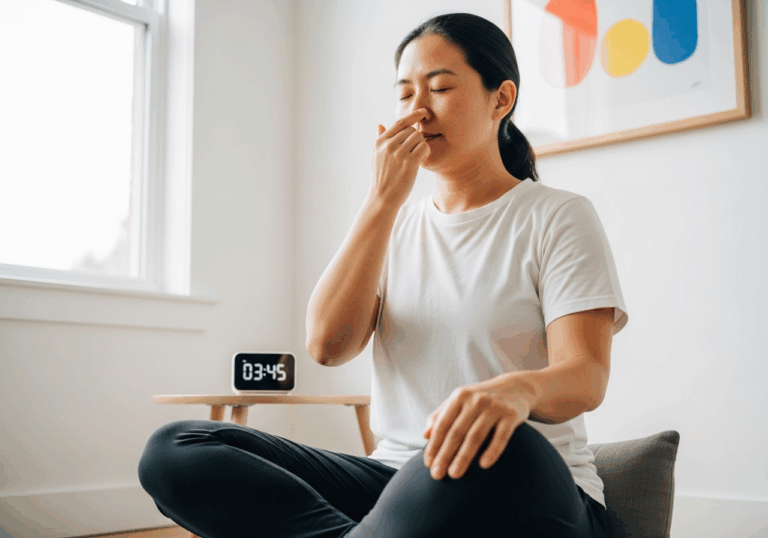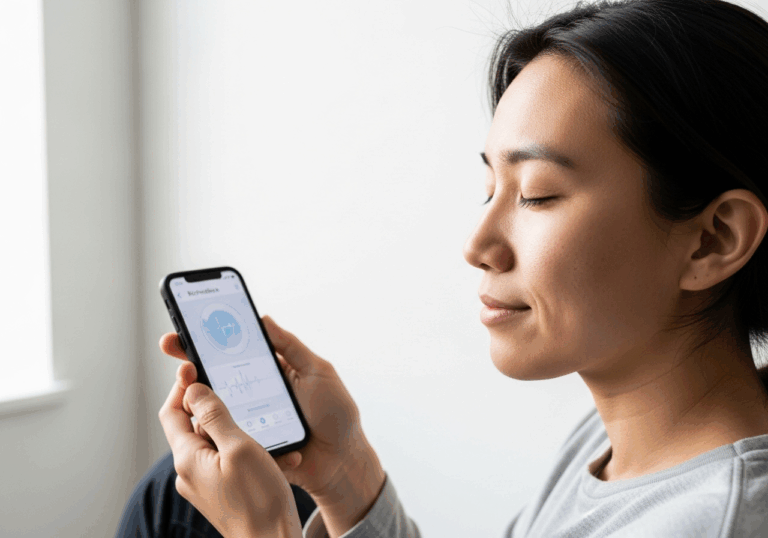Science-Backed Tips
Boost Your Mood in Just 5 Minutes
5-minute ANB sessions can enhance calmness and heart rate.
📊 Did you know?
💡 Why It Matters
1️⃣
Short ANB sessions can be easily integrated into daily routines, promoting mental health.
2️⃣
Improved heart rate variability (HRV) can lead to better stress management and overall wellbeing.
3️⃣
Accessible mood enhancement techniques can reduce reliance on pharmacological interventions.
✅ Try These Micro-Tips
🎯
Practice ANB for 5 minutes daily to improve mood and reduce heart rate.
🎯
Incorporate deep breathing exercises into your routine for at least 10 minutes, 3 times a week.
🎯
Engage in mindfulness practices for 5-10 minutes to enhance emotional regulation.
🎯
Track your mood and heart rate before and after ANB sessions to observe personal changes.
📚 The study
The implications are profound; integrating brief ANB sessions into daily routines can serve as an accessible tool for promoting mental health. Improved HRV is linked to better stress management and overall well-being, suggesting that these simple breathing techniques can reduce the need for pharmacological interventions.
Whether you’re a seasoned practitioner or a complete novice, dedicating just a few minutes to ANB can yield immediate benefits, making it a practical addition to anyone’s wellness toolkit. Embrace the power of your breath and discover how just a few minutes of focused breathing can transform your mood and enhance your life.
❓ Frequently Asked Questions ❓
Learn more
What is ANB?
ANB stands for Alternate Nostril Breathing, a technique used to promote relaxation and balance in the body. It involves breathing through one nostril at a time to enhance calmness and reduce stress levels.
How long does an ANB session need to be to see benefits?
Even a short 5-minute ANB session can significantly reduce heart rate and promote feelings of calmness. This makes it an accessible technique for anyone looking to improve their mood quickly.
Can beginners benefit from ANB sessions?
Yes, even novices can experience mood benefits from short ANB sessions without prior training. Research shows that short-term practice can lead to improved heart rate variability and emotional regulation.
How does ANB affect heart rate variability (HRV)?
ANB practice has been shown to increase parasympathetic HRV control, which is associated with better stress management. Improved HRV can contribute to overall well-being and emotional stability.
How can I incorporate ANB into my daily routine?
You can easily integrate a 5-minute ANB session into your daily routine, making it a quick and effective way to enhance mental health. Consider practicing it during breaks or before bedtime for optimal results.
What are the additional benefits of deep breathing exercises?
Incorporating deep breathing exercises for at least 10 minutes, three times a week can further enhance relaxation and emotional regulation. These practices complement ANB and contribute to overall well-being.
How can mindfulness practices improve my mood?
Engaging in mindfulness practices for 5-10 minutes can enhance emotional regulation and reduce stress. This can lead to improved mood and a greater sense of calm throughout the day.
Should I track my mood and heart rate during ANB sessions?
Yes, tracking your mood and heart rate before and after ANB sessions can help you observe personal changes and benefits. This practice can motivate you to continue with your breathing exercises.
Are there alternatives to ANB for mood enhancement?
Yes, there are various accessible mood enhancement techniques that can reduce reliance on pharmacological interventions. Techniques such as mindfulness, deep breathing, and regular physical activity can also promote mental health.
What is the significance of short ANB sessions?
Short ANB sessions can provide immediate mood benefits, making them a practical tool for anyone seeking to improve their mental health. Their ease of integration into daily life makes them a valuable addition to wellness routines.





